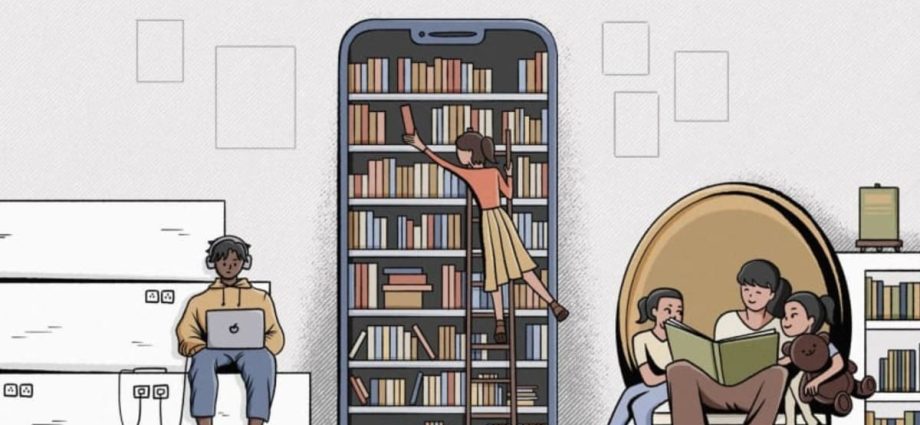
One such example is a new Children’s Biodiversity Library by SEA Aquarium that will be housed within the Central Public Library after it reopens on Jan 12 next year.
The children’s library will have an “Open Ocean Zone” featuring specimens such as shark jaws and coral skeletons, a floor-to-ceiling column with coral-like features and a video projection of a jellyfish habitat housed in the SEA Aquarium.
There will also be regular programmes for children to meet divers and aquarists, as well as opportunities to participate in intertidal animal art, storytelling and upcycling workshops.
It will be the first marine biodiversity-themed learning space for children at a public library in Singapore, aimed at enabling young patrons to explore the wonders of marine life through educational zones and programmes.
Mr Layar believes that such installations could attract young children and their families, including those who had not thought about visiting a library previously like himself.
“People have to be able to feel like making a trip to the library is worth their while; they need to gain something out of it.”
ENGAGING THE NEXT GENERATION
In May, the Progress in International Reading Literacy Study found that Singapore’s Primary 4 pupils topped global rankings in terms of reading literacy across all 57 countries and territories in the survey including Russia, the US and Ireland, which came in second.
In Singapore, the study surveyed more than 6,700 randomly selected Pri 4 students across 183 schools. However, it found that the proportion of these students who “enjoy reading a lot” fell to its lowest level in over a decade – falling to 51 per cent last year compared with 55 and 60 per cent in 2016 and 2011 respectively.
The NLB’s National Reading Habits Study 2021 showed a different picture when it comes to teenagers. In 2021, 85 per cent of younger teenagers (13 to 16 years old) and 86 per cent of older teenagers (17 to 19 years old) read for leisure more than once a week.
This was compared to 76 per cent and 83 per cent for younger and older teenagers respectively in 2018. In 2016, the corresponding proportions were 71 per cent and 72 per cent.
Initiatives such as the biodiversity library are important to build a relationship between children and public libraries, said frequent library goers.
They told TODAY that their childhood experiences at the library had played a role in shaping not just their reading habits of today, but also their disposition towards life.
Singaporean author Amanda Lee Koe said that she had “never lost that thrill of curiosity, openness and discovery of physically being in a library”, years after her parents took her and her siblings to the Marine Parade Public Library every weekend.
“We would lose ourselves for hours, roaming freely from shelf to shelf, genre to genre, filling up a big red basket with books, authors and worlds that we would otherwise not have encountered,” said Ms Lee Koe, 35.
Similarly, Ms Nicole Daduya, a 20-year-old undergraduate at SMU, said that libraries had enabled her to read more widely, eventually growing to like nonfiction and local literature as some of the more “popular” books that she did want to read were often on loan.

